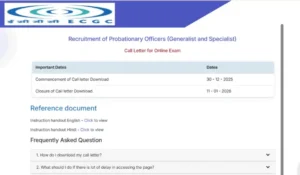We studied the Adjectives in the last post and they weren’t enough so, continuing with the adjectives today we are going to read about some more rules and tricks related to the correct usage of the words and how to identify the adjectives in the sentences.
Adjectives generally are formed by adding suffixes like (ly), (ous)
Rule 1:
Few – used for number. (few, fewer, fewest)
Few – hardly anyone/anything (negative sense)
A Few – not many, some (affirmative meaning)
The Few – not many but all
For example –
(1) I requested him to bring me few books. (Use ‘a few’ to make it more clear)
(2) Few days I passed in her company were exciting (use ‘The few ‘ in the sentence)
Rule 2:
To compare one with all the others of the same quality-
(A) Sub(noun)+ verb+ (comparison) adjective+any other+Noun(singular)
Sub(noun)+ verb+(comparison) adjective+ all other+Noun(plural)
For example –
(1) Amazon is longer than any river in the world. (wrong)
Amazon is longer than any other river in the world. (correct)
Explanation – Here in comparison to rivers, word any river includes Amazon also. To compare The Amazon with other rivers we wrote the second sentence.
(2) She is more intelligent than any other student in the class. (wrong)
She is more intelligent than all the other students in the class. (correct)
(B) Comparison of Quality-
For example –
The climate of Chennai is warmer than Delhi. (wrong)
The climate of Chennai is warmer than that of Delhi. (correct)
Explanation – Here the example shows the climate of Chennai is compare with Delhi but we are comparing the climate of both cities.
We use the climate of Delhi but to avoid redundancy we always use “that of” before the comparing Noun
C) Comparison with two different identity
For example –
Here
(2) The Amazon is longer than any rivers of India.
D) Comparison when excluding someone or something.
For example –
She is better than anybody in the class. (wrong)
She is better than anybody else in the class. (correct)
Explanation – Anybody includes her as well so we will use else to clarify that she is excluded when compared.
E) Both “as….as” and “then” are used when we use a positive and comparative degree of an adjective together.
For example –
She is as good as if not better than you.
F) Comparison of two same quality of the same person-
She is cleverer than honest. (wrong)
She is more clever than honest. (correct)
Rule 3:
The order of adjectives qualifying a noun (S S A C N M)
For example –
Comparison of weight, quantity, and number.
No comparison is implied in the following sentences when there is ‘time’ used for comparison. So a positive degree is used. and when we make a sentence without ‘ times’ we use a comparative degree.
For example –
(1) My book is three times cheaper than yours. (Use ‘as cheap as’)
(2) Your income is many times higher than Tushar’s. (wrong, use ‘as high as’)
(3) This book is five rupees cheaper than yours. (correct)
(4) This table is ten kilos lighter than that. (correct)
Rule 5:
This rule is also applicable to the hyphenated noun.
For example –
I gave him three ten-rupees notes. (wrong)
I gave him three ten-rupee notes. (correct)
That’s all for today’s blog. We will again present you with more rules and examples. All the best.



 MP Apex Bank Cut Off 2026, Check Factors...
MP Apex Bank Cut Off 2026, Check Factors...
 SEBI Grade A Admit Card 2025-26 Out @seb...
SEBI Grade A Admit Card 2025-26 Out @seb...
 ECGC PO Admit Card 2025-26 Out at ecgc.i...
ECGC PO Admit Card 2025-26 Out at ecgc.i...








